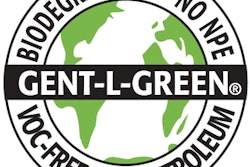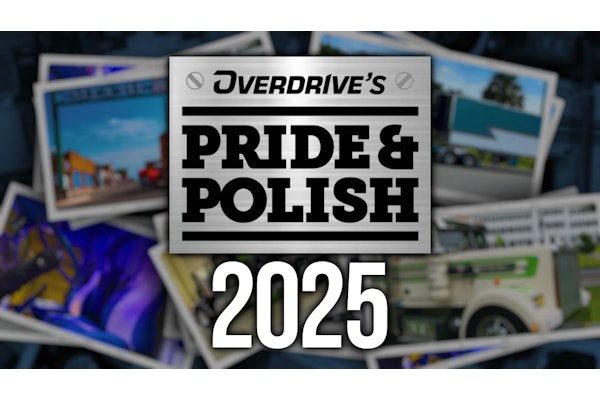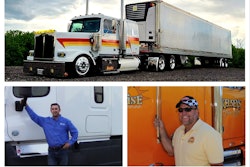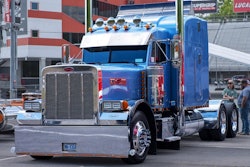Color It Right
 Getting a truck painted is more complicated than you think
Getting a truck painted is more complicated than you think
Pick the right finish
Paints today are nearly all urethane and polyurethane chemistries, but you’ll need to decide whether to get a single stage, or “mono-coat,” paint job or a two-stage, or “basecoat/clearcoat,” finishing system. First evaluate the age of the truck and the condition of its drivetrain:
• Trucks destined for resale within two years are fine with a single stage, and the same goes for frames and trailers.
• For the cab of a truck with a sound drivetrain and several years’ service left in it, get a clearcoat/basecoat system. Here color, gloss, UV (ultra-violet light) protection and dirt repulsion matter, especially when it will be used in the snow-belt or where there is year-round intense sun, when it will be painted in one of a few colors that fade especially easily and whenever the truck has a metallic finish.
Pick the right shop
 When looking for a paint shop, make sure technicians are certified by a major paint manufacturer.
When looking for a paint shop, make sure technicians are certified by a major paint manufacturer.
• Certification of technicians by a major paint manufacturer.
• A substantial spray booth, which flows clean air around the truck, preventing dirt contamination; pulls away over-spray; and quickly evaporates solvents so the finish will look good.
• Use of the best HVLP (high-volume, low-pressure) spray guns to minimize paint waste, dual-action sanders and, when a large area is to be painted, pressure-fed spray guns.

• Quality surface preparation, especially after bodywork has been done.
• The use of sealer/primer coatings prior to painting.
• A good warranty.
Also, ask to see a truck they have painted and discuss in detail what you want in appearance and durability.
Color It Right
Getting a truck painted is more complicated than you think.
Bob Wiszneski, a certified truck painter at Bergey’s Collision Center, began this frame painting job by using compressed air to clean the frame of moisture and dirt.

 Wiszneski next masked taillights so overspray would not block their lenses.
Wiszneski next masked taillights so overspray would not block their lenses.
 Next came a coat of sealer/primer so the paint would have an ideal surface to cling to. While the sealer/primer dried, the final coat was prepared with computerized mixing instructions.
Next came a coat of sealer/primer so the paint would have an ideal surface to cling to. While the sealer/primer dried, the final coat was prepared with computerized mixing instructions.

 The paint was baked at 140 degrees F to ensure it was hardened up for the road.
The paint was baked at 140 degrees F to ensure it was hardened up for the road.







